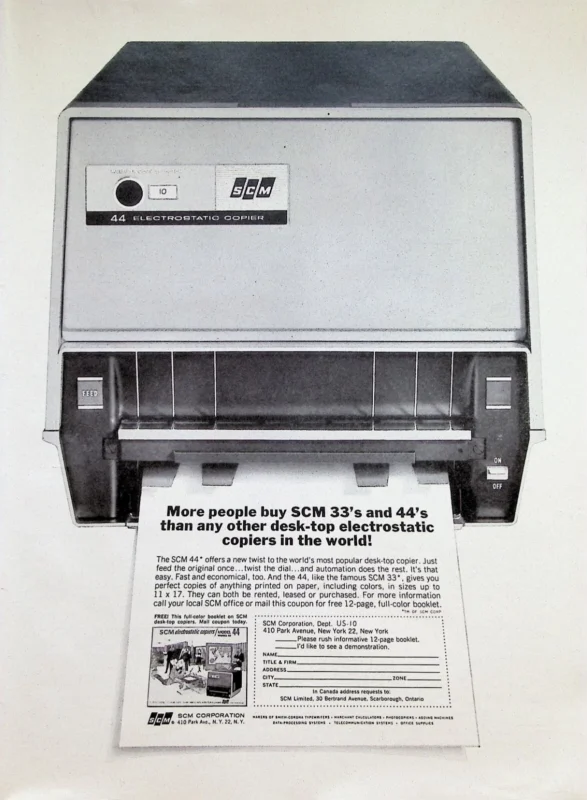Production and Industrial Print Markets are Poised for a Wide World of Change in 2019
Above: The Konica Minolta C6100
The landscape of printing and copying for 2019 at first seems vast and uncharted, but to some extent, it is a matter of the more things change, the more they stay the same. Yet, we’re talking technology here, and mostly printing technology to be specific, so there are always some new things to talk about and usually some surprises.
Less is more. More or less.
Having hung out on the production side of printing for much longer than I like to admit, I have seen, heard, and commented on just about everything that has shown up in the past 25 years. One of the most interesting””and predictably predictable””trends is the migration of speeds, feeds, and features from the big footprint, high-dollar machines to the smaller devices that now populate CRDs and hallways in countless offices across North America, as well as the production floors of most print services providers.
Way back in 1990, it seemed amazing when Xerox rolled out the DocuTech, bringing to market a machine that would do digital printing at an astounding 135 monochrome pages per minute (ppm). Two more game-changers arrived just three years later””the color digital presses from Indigo and Xeikon. Products from these firms and others have expanded companies’ market share while spawning a confusing array of imitators and wannabes that are now superior, in nearly every way, to the big boxes of 20-something years ago. This makes sense because it is far easier (and more profitable) to build technology with a lot of bells and whistles, compelling speed, and bleeding-edge performance parameters and get them into the hands of larger and presumably profitable printing, mailing, and graphics pros. Then, those companies can help fund the requisite care, feeding, and in-the-field product development of the new machines. This strategy reveals the kinks faster than by foisting the boxes off on companies that can support one or two lonely examples in a copy center. The identical logic, by the way, also happens with automobiles: Anti-lock braking systems first came out in the high-end car lines. Now, it’s standard on bottom-feeder models.
Trickle-Down Technology
None of this trickle-down tech has changed much as we roll into 2019. The latest small and mid-size machines of 2019 are, for the most part, far more capable than the big boxes of even just 10 years ago, and offer much better value for the dollar. Some of the top performers include the Canon C8000 and C10000 models, Konica Minolta’s C6100, Ricoh’s C7200 and C9200, and Xerox’s Versant series. All are poaching on the same market segments that needed much bigger and more costly machines just a few years ago. These smaller machines are landing on shop or office floors for very affordable prices and with typically excellent reliability. Buyers of these machines have told me they have been able to buy two or even three machines for about the same investment they’d make for a single larger high-end machine, while literally doubling throughput and not having to contend with the service or support burdens that come with the big boxes. And, when you look at the specs and output of these “lesser” machines, you see them delivering excellent color quality, offering skew correction and good registration, with some producing sheets three or more feet long, and all capable of substantial average monthly volume capabilities. These machines all fill a need that equipment vendors are rushing to meet.
Still, it depends on the applications. Thanks to aggressive branding campaigns, some of the most demanding customers will specify that a job be printed on say, an HP Indigo or Xerox iGen 5. After all, these devices have some capabilities that the smaller machines don’t presently match. But that will change, and you will see some of this shift in 2019. We’re already seeing the ability to print sheets as long as 47″ on some smaller printers, and in my opinion, greater print width on toner machines will not be far behind. Right now, the high-end machines have an advantage in sheet width, but this edge probably won’t last much longer. The bigger machines also have some advantages with respect to options for a broader color palette, notably for metallics. This will also change, although it might not happen in 2019, yet MGI is an outlier here. Still, I think we’ll see 14.5″ widths and some limited metallic, pearlescent, and other colors on mid-range machines (50 to 100 ppm) by the end of 2020, if not in 2019. (But remember, 2020 is a “drupa year,” when all kinds of things can change, with some announcements coming in the fourth quarter of 2019.)
Some machines already offer more colors and the ability to lay down white toner, along with G7-certified color management. The servers of most mid-range printers typically include software for color management and various workflow functions already built in, and these capabilities will be further refined and added to in 2019. For example, look for improved automation from digital storefronts and web-to-print. Most of this comes from various flavors of EFI Fiery software, but most vendors have their own software options that are worth a look, especially for higher volume locations with many customers, or where color management and the ability to analyze usage and productivity are important.
Got Substrates?
Two areas where smaller machines impress both buyers and users are substrates and finishing. Most mid-range machines can accommodate a wide range of coated and uncoated papers. This capability is likely to expand next year because it is customer demand in action. As corporate users and customers of print-service providers want to use heavier or coated substrates, equipment vendors have been quick to respond. Although the smaller boxes may run at lower speeds for heavier or coated substrates, the machines can still do the job. This gives end-users much-needed flexibility and makes it possible for print providers to say “yes” when a customer wants a job completed on a heavier coated paper. Sure, the same job could be run on any of several high-end machines, but even many of the larger franchised or corporate print shops don’t have the biggest and best machines on-site, making same-day or even overnight turnaround impractical or impossible for some jobs. But the smaller machines can still get the job done.
PULL QUOTE: Two areas where smaller machines impress both buyers and users are substrates and finishing. Most mid-range machines can accommodate a wide range of coated and uncoated papers. This capability is likely to expand next year because it is customer demand in action.
Finishing Touches
Even more important than the print engine is finishing. Once a potential barrier to prompt completion of a job, finishing systems are increasingly being integrated into even modest print engines. Virtually all finishing options are now available via an à la carte selection of modular choices, allowing customers to select the best options for their needs. This trend will continue into 2019, enhanced by increased automation.
Most inline finishing products are already driven by print management software that can be controlled by the press operator. In many cases, customers can specify finishing options when a job is submitted electronically, giving a press operator an immediate sanity check on how a job should be prepared. However, finishing has long primarily been an off-line or near-line function. This makes perfect sense: Why risk not being able to complete a job because a finishing device (or a press) goes down? On an in-line system, a failed hole-punch, for example, could stop a print engine and delay multiple jobs Not good. So while the appeal was there, most in-plant and commercial print providers opted for near- or off-line finishing. Many still do, and it is very much dependent on the needs of an individual operation, but the integration of finishing systems is much better than it once was and the reliability is much higher, so watch for more inline finishing integration in the months ahead. Most inline devices””from software to mechanical connections””are developed in close integration between the finishing equipment company and the maker of a print engine, making reliability higher and functionality simpler and more seamless.
Then, There’s Inkjet
Despite the announcements and innovations as toner technology of the high-dollar machines migrates down to mid-level boxes, the real hype in the industry is inkjet. Every digital print engine maker either makes their own inkjet printer or partners with another company to produce some type of inkjet
system. This is a sea change in the print market, and it is not a fad that’s going away. In fact, inkjet will become more important and inkjet is poised to become the dominant digital print technology. Already, several equipment vendors have all but ceased R&D spending on monochrome toner systems and dialed back development plans for color-toner machines.
With the exception of the small machines from RISO, inkjet is limited to high-speed, high-volume machines that can print hundreds of pages a minute. This will change too, maybe not in 2019, but I expect mid-range inkjet printers to become available within two years. Not surprisingly, they will come from the same companies that now sell mono- and color-toner printers in the 60 to 180 ppm segments. There are technical issues that need to be overcome””notably ink coverage and drying pages””but the market is there, and the profit margins are attractive for vendors. Remember how high-end technology trickles down market? Watch what happens with inkjet.
As you move into 2019, watch what is happening with the high-end machines. Pay attention! Because you will soon have to explain how a new capability that was previously available only on the top-of-the-line model is now being rolled out on a more affordable machine that adds real value for your customer. And take some time to learn about inkjet. You don’t need to sell it next week, but get up to speed on the technology because you will eventually be selling it.
Access Related Content
Visit the www.thecannatareport.com. To become a subscriber, visit www.thecannatareport.com/register or contact cjcannata@cannatareport.com directly. Bulk subscription rates are also available.




